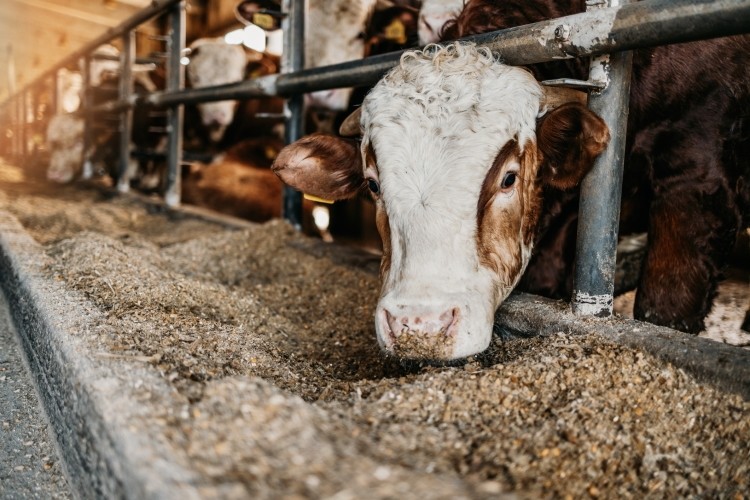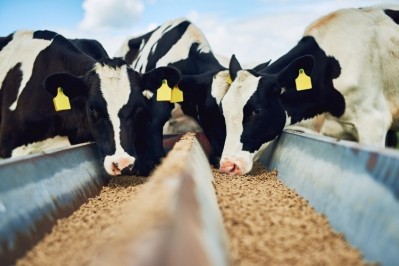Milk production: Bio-engineered corn touts sustainability benefits at no extra cost

In the current climate of volatile input costs, lower expected milk production and a steady consumer demand, finding a way to increase feed efficiency could go some way to boosting profitability.
A developer of bio-engineered grain is proposing a swap-in solution for traditional animal feed – and one that offers around 5% increase in feed efficiency, resulting in financial savings of up to US$208m per milking cow. What’s more, farmers who opt to grow this genetically-modified crop on-farm are also in for lower land and water usage – and there’s no difference in seed purchase price, either.
Sounds too good to be true? To find out more about the performance of Syngenta’s Enogen corn hybrid, DairyReporter spoke to Duane Martin, PhD, head of marketing for Enogen, and Randy Shaver, Ph.D., a professor of animal nutrition and extension dairy nutritionist from the University of Wisconsin-Madison's Animal and Dairy Sciences Department . . .
The GM trait
The product in question is Syngenta Seeds’ Enogen, which the company has marketed as livestock feed in the beef industry since the 2017 season, and also as silage in dairy production. Enogen is genetically-modified to express an alpha-amylase enzyme, which helps break down starch into smaller-chain sugars – essentially carbohydrates that become available to cows as they digest – giving them more energy to produce milk. The corn hybrid was first developed to help enhance ethanol production, but has additionally been approved for its use in food and feed in the US.
“The starch digestibility in Enogen corn silage is higher than other corn silage the day you chop it,” explained Martin. “So for dairies that are pretty tight on feed or have had a challenging year and need to dig into a silage pile sooner than they would like to, we see some real advantages in having that enzyme active from day one.”
Whilst with a traditional corn hybrid, the process is lengthier. “You need to let those ferment for three to six months in many cases, whereas you can dig into the Enogen silage much earlier,” he added.
No yield penalty
Professor Randy Shaver, PhD had conducted research into improving starch digestibility in the past. He reported that efforts to bolster this trait in corn hybrids would often create agronomic challenges – but with Enogen, there had been no ‘yield penalty’. “With different corn hybrids, you might lose some agronomic yield when you try to improve their nutritional quality,” he explained. “With Enogen, this has not occurred - these hybrids have performed very well in the field. Growers and dairy farmers have not seen loss in yield of corn silage or grain.”
Besides its suggested nutrition and yield performance, what could make the Syngenta corn hybrid particularly appealing is that it can be swapped in for traditional corn without adjustments to the feed ration. Shaver again: “The research trials and from the farms [growing Enogen] showed that there has been no need for major changes in the diet formulations.”
“There simply doesn’t seem to be a downside for producers to try the technology,” Martin added. “We find the greatest success in just recommending that they substitute the corn they’re currently feeding, for Enogen corn. It’s a fairly simple change that could make a significant difference in the profitability of an operation.”
Sustainability gains
The feed efficiency gains promoted by Syngenta were first uncovered through a lifecycle analysis (LCA) study designed for the beef industry, which compared the performance of Enogen corn versus conventional feed corn. The researchers from the University of Arkansas then concluded that the use of Enogen corn resulted in a ‘6% improvement in the four key environmental performance metrics of beef production’, including water, energy and land use.
To corroborate these findings, the company commissioned a dairy-specific LCA, which was carried out by the Sustainable Solutions Corporation and showed that around 1.5m kg of carbon emissions could be cut per 1,000 dairy cows fed an Enogen corn diet, with land use reduced by 249 acres, water use cut down by 13m gallons, and energy savings of around 220,000kWh accrued.
The dairy-specific study also concluded that the environmental impacts of 1kg of energy-corrected milk produced by animals on Enogen feed corn diets were between 2%-6% lower than those for a kilo of milk produced by animals on isoline corn diets.
The efficiency gains are no-hard-and-fast-numbers, however, and can vary from farm to farm. “In dairy, there's just so many things changing from year to year,” Martin said. “Each cropping year's different than the previous - the climatic conditions are different, you could have heat stress, for example, and there are a lot of moving parts. So there’s certainly variation in response when you get out on farms.” He goes on to add that some farmers have reported double-digit results, so a 5% increase in feed efficiency remains a good baseline measure.
Producers may be tempted to think that for the touted benefits it brings, the seed would cost them more upfront, but Syngenta has said this isn’t the case. According to Martin, there is no cost premium to purchasing the bio-engineered seed, as this would have created ‘a barrier to adoption’ in what is an increasingly competitive market in the US.
‘Doing more with less’
Speaking on what type of dairies are showing interest in Enogen, Martin said the company has seen ‘some interesting adoption trends’. “Obviously, a traditional dairy may be interested, but we've also had interest from some dairies that have marketed their products as organic,” he explained.
“I think the drive for efficiency, profitability and sustainability is really causing a lot of different operations to take a look at the technology. It’s really about doing more with less, and that’s what I think agriculture is challenged to do over the next several decades.
“That’s why we are really excited about the technology - it's a usable, practical technology that a producer could adopt without additional expense, that may make a real difference both in the profitability and the sustainability front,” he concluded.
. . . it's a usable, practical technology that a producer could adopt without additional expense . . ." - Duane Martin, PhD
Enogen is grown ‘where dairies are’, from the West Coast of the US to the Southwest and Southern Plains to the Upper Midwest and Northeast.
Links to the ethanol industry
Enogen was first developed for use in the ethanol industry, where its ability to efficiently convert starch into sugars could save water and energy. But this trait has raised concerns from corn processors and growers, who had warned that if the crop permeated the food chain it could spoil textures, resulting in ‘soggy tortillas’ and ‘gummy bread’. To prevent this from happening, Enogen is grown in what Martin refers as ‘a stewarded closed-loop system’.
“We want to keep it where it's intended to be and because of that every acre of Enogen corn is grown under contract,” he explained. “We simply ask our corn growers to tell us you know where they're growing Enogen corn, how many acres, where they're going to store it and where they're going to feed it or deliver it, if it's for use in an ethanol production facility, for example.”
Currently, Enogen is available in the US and Canada, though Syngenta is working with foreign regulators in a bid to make it available beyond North America.






